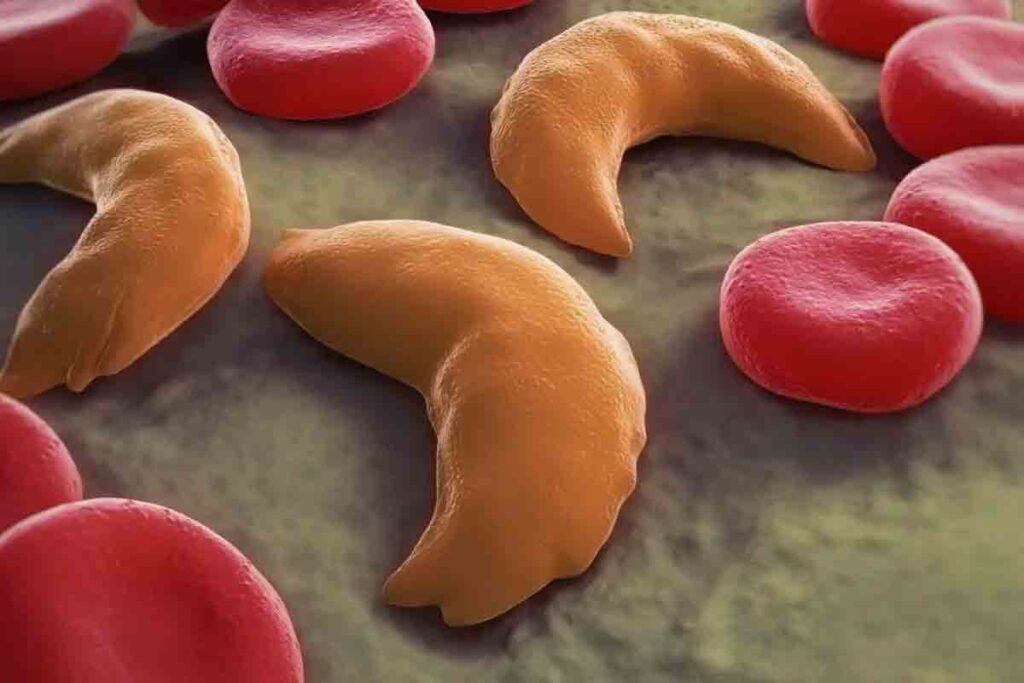
Understanding the true meaning and definition of ‘aplastic‘ can be life-saving. Every cell matters.
At Liv Hospital, we know how important it is to understand aplastic anemia. It’s a rare but serious condition where the bone marrow can’t make enough blood cells.
This condition causes fatigue, infections, and bleeding. It really affects patients’ lives. Our team focuses on advanced diagnosis and care for aplastic conditions.

In medical terms, “aplastic” means a problem with tissue or organ growth. It’s key to understanding many health issues and their effects on patients.
The word “aplastic” comes from Greek. “A” means “without” and “plasis” means “formation” or “growth.” So, it’s about not growing or developing properly. Knowing where the word comes from helps us understand its medical meaning.
Aplastic conditions happen when tissues or organs don’t grow properly. This can be due to genes, the environment, or the body attacking itself. At its heart, it’s about tissues not developing as they should.
Let’s look at the difference between normal growth and aplastic conditions:
| Characteristics | Normal Tissue Development | Aplastic Conditions |
| Tissue Growth | Normal growth and development | Failure of growth or development |
| Causes | Genetic and environmental factors supporting growth | Genetic, environmental, or autoimmune factors hindering growth |
| Clinical Implications | Normal organ function | Organ dysfunction or failure |

Understanding aplasia is key to knowing its effects on human health. Aplasia is when tissues or organs don’t develop right or stop growing. This can cause many health problems.
Normal tissue growth is a complex process. It involves many steps and is tightly controlled. But aplastic conditions mess with these steps. This leads to tissues that don’t grow right or don’t work at all.
Tissue growth in humans is a detailed process. It includes cell growth, change, and organization. But aplastic conditions happen when this process goes wrong. This results in tissues or organs that don’t grow right or are missing.
For example, bone marrow aplasia means the bone marrow can’t make blood cells. This leads to aplastic anemia. It shows how different normal tissue growth is from aplastic conditions. Aplastic conditions can have serious health effects.
| Characteristics | Normal Tissue Development | Aplastic Conditions |
| Cellular Development | Cells proliferate and differentiate normally | Cell development is halted or defective |
| Tissue Functionality | Tissues function as expected | Tissues are underdeveloped or non-functional |
| Health Implications | Normal health and bodily functions | Severe health complications and possible organ failure |
Many things can cause tissue development failure in aplastic conditions. Genetic changes, environmental factors, and autoimmune responses can all play a part. These factors can mess up normal tissue growth.
“The pathophysiology of aplastic anemia involves complex interactions between genetic predispositions and environmental exposures, highlighting the multifactorial nature of aplastic conditions.”
Narang et al., 2018
Knowing how these mechanisms work is important for finding treatments for aplastic conditions. Scientists are studying the cells and molecules involved. This research helps find new ways to treat aplastic conditions.
It’s important to know the different types of aplastic conditions. This knowledge helps doctors diagnose and treat patients better. Each type has its own signs and treatment needs.
Bone marrow aplasia, also known as aplastic anemia, happens when the bone marrow can’t make enough blood cells. This can cause severe anemia, infections, and bleeding problems.
Many things can cause bone marrow aplasia. These include toxins, some medicines, viruses, and autoimmune diseases. Doctors use blood tests, bone marrow biopsies, and other tests to find out if someone has it.
Some aplastic conditions affect specific organs. For example, aplastic kidney or aplastic lung problems can happen. They might be due to problems during development or damage later on.
These conditions need special tests and treatments. Knowing the cause is key to managing them well.
Aplastic conditions can be either present at birth or develop later. Congenital aplastic conditions often come from genetic issues or developmental problems. Acquired aplasia can be caused by things like environmental factors, infections, or toxins.
| Type of Aplasia | Causes | Characteristics |
| Congenital Aplasia | Genetic mutations, developmental anomalies | Present at birth, it often affects multiple systems |
| Acquired Aplasia | Environmental exposures, infections, toxins | Develops later in life, can be isolated to specific organs or systems |
Knowing if aplasia is congenital or acquired helps doctors plan better treatments. This way, they can focus on the root cause and improve the patient’s quality.
Aplastic anemia is a serious condition where the bone marrow can’t make enough blood cells. It leads to a lack of red blood cells, white blood cells, and platelets. We will look at what causes it, its symptoms, and how doctors diagnose it.
The bone marrow fails to make blood cells in aplastic anemia. This can happen due to autoimmune processes, toxins, or genetics. Without enough blood cells, patients face many health issues.
People with aplastic anemia often feel tired and short of breath. They might get sick easily and bruise or bleed a lot. How bad these symptoms are depends on how much the bone marrow is failing.
Doctors use tests and a bone marrow biopsy to diagnose aplastic anemia. They look for low blood cell counts and small bone marrow. It can be hard to tell if it’s aplastic anemia or something else.
| Diagnostic Criteria | Laboratory Findings |
| Pancytopenia | Reduced counts of red blood cells, white blood cells, and platelets |
| Bone Marrow Hypocellularity | Low cellularity on bone marrow biopsy |
| Absence of Other Causes | Ruling out other conditions that may cause pancytopenia |
Aplastic anemia is a serious condition that needs quick diagnosis and treatment. Knowing how it works, its symptoms, and how to diagnose it is key to helping patients.
Understanding aplastic disorders is key to finding better ways to prevent and treat them. We look at how common they are worldwide, who gets them, and what increases the risk. This helps us understand their impact better.
In Europe, about 2 in every 1 million people get aplastic anemia each year. This rare condition is hard to diagnose and treat. The number of cases worldwide might be different because of various population sizes and risk factors.
Aplastic anemia mostly affects young adults and older adults. This pattern suggests different causes and ways the disease works in these age groups.
There are known risks for aplastic disorders, like exposure to chemicals, radiation, and viruses. Genetics also plays a part in some cases. Knowing these risks helps us catch the disease early and prevent it.
By studying these risks, we can make treatments more effective. This research is vital for improving care for people with aplastic disorders.
Exploring the causes of aplastic conditions shows a mix of genetic, environmental, and autoimmune factors. Knowing these causes helps in finding better treatments and improving patient care.
Genetics is key in aplastic conditions. Disorders like Fanconi anemia and Dyskeratosis congenita raise the risk of aplastic anemia. These conditions lead to bone marrow failure because of inherited mutations.
Key genetic factors include:
Some environmental toxins and chemicals can cause aplastic conditions. Benzene, pesticides, and certain industrial solvents increase aplastic anemia risk. Radiation, from accidents or medical treatments, also harms the bone marrow.
Notable environmental exposures include:
Autoimmune mechanisms also play a part in aplastic conditions. In autoimmune aplastic anemia, the immune system attacks the bone marrow. This leads to fewer blood cells, causing severe anemia, infections, and bleeding.
Many aplastic anemia cases have no known cause, called idiopathic aplastic anemia. It’s thought that genetics and environment might combine, but the exact reasons are unclear.
More research is needed to find the causes of idiopathic aplastic anemia. This will help in creating specific treatments for these patients.
It’s key to accurately spot aplastic conditions for good treatment. We use lab tests, bone marrow checks, and clinical exams to find aplastic anemia and similar issues.
Labs are key in spotting aplastic disorders. We do complete blood counts (CBCs) to check blood cell levels. This shows if there’s anemia, low white blood cells, or platelets, hinting at bone marrow failure.
Blood tests also help rule out other possible causes of symptoms. For example, we look at reticulocyte counts to see if the bone marrow can make new red blood cells.
| Laboratory Test | Purpose | Indications |
| Complete Blood Count (CBC) | Assess blood cell levels | Anemia, leukopenia, thrombocytopenia |
| Reticulocyte Count | Evaluate bone marrow function | Low count indicates bone marrow failure |
A bone marrow biopsy is a key test for aplastic anemia. It takes a bone marrow sample, usually from the hip, for study. This helps us see how the marrow is doing and spot any problems.
The marrow analysis looks at cell shapes, checks for fibrosis, and searches for diseases. This info is vital to confirm aplastic anemia and rule out other marrow issues.
Differential diagnosis is key in finding aplastic disorders. We look at other causes of bone marrow failure, like myelodysplastic syndromes, leukemia, and lymphoma. We use lab tests and clinical checks to rule them out.
Getting the right diagnosis is important for the right treatment. It means looking at the patient’s history, doing a physical exam, and checking test results carefully.
Managing aplastic anemia requires a variety of treatments. We will look at each option, aiming to give patients the best care.
Supportive care is key in treating aplastic anemia. It helps manage symptoms and improve life quality. This includes blood transfusions and antibiotics to fight infections. Good supportive care is vital until a more lasting treatment can be found.
Experts say, “Supportive care is a mainstay in treating aplastic anemia, greatly affecting patient results.”
“The main goal of supportive care is to keep the patient’s quality of life high while looking into more lasting treatments.”
Immunosuppressive therapy (IST) is a major treatment for aplastic anemia. It’s for those who can’t get stem cell transplants right away. IST uses drugs like antithymocyte globulin (ATG) and cyclosporine to calm the immune system. This can greatly improve blood counts for some patients.
Stem cell transplantation is the only cure for aplastic anemia, mainly from a matched sibling donor. It replaces the patient’s bad bone marrow with healthy donor cells. The success of this transplant depends on finding a good donor and the patient’s health.
New treatments for aplastic anemia are being researched. These include new immunosuppressive drugs and gene therapy. The future of treating aplastic anemia looks promising, with more tailored and effective treatments.
We are dedicated to keeping up with these new treatments. This way, our patients can get the latest and best care.
Genetic research has made big strides in understanding aplastic conditions. New studies have shed light on the complex reasons behind bone marrow failure. This knowledge opens up new ways to treat these conditions.
Studies have found that aplastic anemia often stems from problems in the bone marrow. This is due to issues with the cells that make blood. Researchers have pinpointed important genes and pathways involved, like those in DNA repair and telomere maintenance.
Molecular Mechanisms: A key feature of aplastic anemia is the failure of stem cells to make blood cells. Recent research has uncovered the molecular reasons behind this failure. It shows how immune attacks and stem cell problems play a role.
Genetic studies have been vital in figuring out what causes aplastic anemia. They’ve found several genetic mutations linked to the condition. These include those affecting telomere maintenance and DNA repair.
| Gene | Function | Association with Aplastic Anemia |
| TERC | Telomerase RNA component | Mutations associated with aplastic anemia |
| TERT | Telomerase reverse transcriptase | Mutations linked to bone marrow failure |
| RTEL1 | Regulator of telomere elongation helicase 1 | Mutations associated with telomere shortening |
The insights from recent research are key to creating new treatments for aplastic anemia. Knowing the molecular and genetic causes of the condition will help make targeted therapies.
As we learn more about aplastic mechanisms, we’re getting closer to better treatments for aplastic anemia. These treatments will be more effective and tailored to each patient’s needs.
It’s important to know the prognosis and long-term outcomes for aplastic anemia patients. Medical treatments have greatly improved survival rates and quality of life.
Survival rates for aplastic anemia patients have greatly improved. Immunosuppressive therapy and bone marrow transplantation have been key in this improvement.
A study found that overall survival rates have risen a lot. Many patients can now live normal lives again.
Several factors can affect treatment success for aplastic anemia. These include the patient’s age, how severe the condition is at diagnosis, and how well they respond to treatment.
Managing complications and relapse is key to long-term care in aplastic anemia. Regular follow-up and monitoring are essential to catch any signs of relapse or complications early.
| Complication | Management Strategy |
| Infections | Prophylactic antibiotics, regular monitoring |
| Bleeding | Platelet transfusions, managing anticoagulant therapy |
| Relapse | Re-initiation of immunosuppressive therapy, considering alternative treatments like bone marrow transplantation |
Understanding the prognosis and long-term outcomes helps healthcare providers tailor treatment plans. This improves patients’ quality of life and survival rates.
Liv Hospital focuses on the latest medical research and caring for patients. We aim to give top-notch healthcare to patients from around the world.
At Liv Hospital, we follow strict ethical standards for treating aplastic conditions. Our new methods are made to give the best care possible. Medical experts say, “The mix of new treatments and ethics is key in treating aplastic disorders.”
We tailor our care to each patient’s needs. We evaluate each patient’s condition and create a treatment plan just for them. Our treatment plans cover all aspects of care, including physical and emotional support.
Liv Hospital offers both preventive and curative health services. We stress early care and prevention to lower the risks of aplastic conditions. Our team helps patients with lifestyle changes and preventive steps.
For those needing treatments, we have options like immunosuppressive therapy and stem cell transplants. Our specialists help choose the best treatment based on the latest research. We keep our treatments up-to-date with the latest medical science.
At Liv Hospital, we’re proud of our top medical results. Our team’s skill and modern facilities ensure quality care. We always aim to improve, checking our results to stay competitive worldwide.
Our commitment to excellence shows in our patient results and happiness. We work hard to keep our care standards high, giving patients the best support and treatment.
Aplastic disorders are complex challenges in medical science. From understanding aplasia to the latest treatments, research, and innovation are key. This journey shows how vital it is to keep pushing forward.
Medical research and new treatments are essential for better patient care. At Liv Hospital, we aim to provide top-notch healthcare. We also support international patients with all they need.
Collaboration and innovation are key to better patient care. The future looks bright for those with aplastic disorders. We’re committed to improving their lives with the latest medical practices.
Have questions or need assistance? Our team is here to help you with appointments, services, or general inquiries.